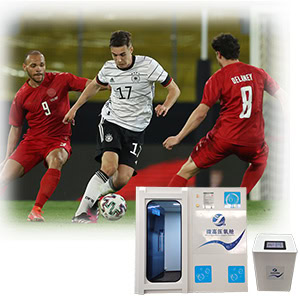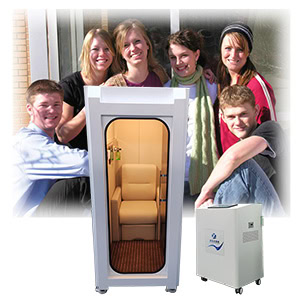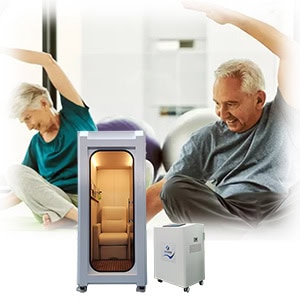How does a Hyperbaric Chamber Heal Wounds
Introduction
Hyperbaric oxygen therapy (HBOT) is a cutting-edge medical treatment that involves placing patients in a pressurized chamber where they breathe 100% pure oxygen. This therapy, which dates back to the early 20th century, has gained widespread acceptance for its remarkable ability to enhance wound healing and treat various medical conditions. By exposing the body to high levels of oxygen at increased atmospheric pressures, HBOT significantly boosts the amount of oxygen dissolved in the blood plasma. This, in turn, accelerates healing processes, improves blood circulation, reduces inflammation, and combats infections. Particularly beneficial for chronic and non-healing wounds, such as diabetic ulcers, radiation injuries, burns, and crush injuries, HBOT has become an invaluable tool in modern medicine. This article delves into the mechanisms by which HBOT enhances wound healing, highlighting its effects on oxygen delivery, circulation, cellular processes, inflammation reduction, and infection control. Understanding these mechanisms underscores the profound impact HBOT can have on patient outcomes, making it a vital option in the arsenal of treatments for complex wounds and other medical conditions.
Increased Oxygen Delivery
Hyperbaric oxygen therapy (HBOT) involves placing the body in an environment where it is exposed to 100% pure oxygen at pressures higher than those found at sea level. This heightened pressure allows for a greater concentration of oxygen to dissolve into the blood plasma, significantly more than what is achievable under normal atmospheric conditions. When oxygen is delivered to the body at these increased levels, it enhances the overall oxygenation of tissues throughout the body. This is particularly beneficial for wound sites, where the extra oxygen can be transported by the plasma to areas that might have impaired blood flow or are suffering from hypoxia (lack of oxygen). As a result, the wound area receives a substantial boost in oxygen supply, which is crucial for cellular functions and energy production, ultimately facilitating the body’s natural healing processes. Enhanced oxygen delivery helps revitalize damaged tissues, enabling them to repair more efficiently and effectively.
Improved Circulation
In a hyperbaric chamber, the combination of high-pressure and pure oxygen environments significantly improves blood circulation and reduces swelling around wound areas. This enhanced circulatory effect ensures that oxygen-rich blood is more effectively transported to damaged tissues, promoting a more robust healing response. Improved blood flow is essential in delivering not only oxygen but also vital nutrients and immune cells necessary for the repair and regeneration of tissues. By reducing swelling, HBOT alleviates pressure on blood vessels, allowing for better perfusion of the affected area. This process aids in clearing out metabolic waste and toxins from the wound site, further supporting the healing process. The improved circulation achieved through HBOT also helps in revascularization, the formation of new blood vessels, which is critical for sustained wound healing and tissue repair. This comprehensive enhancement of blood flow and reduction of edema (swelling) creates a more conducive environment for the body’s natural healing mechanisms to function optimally.
Enhanced Wound Healing Processes
The elevated oxygen levels achieved during hyperbaric oxygen therapy play a pivotal role in accelerating various wound healing processes. High concentrations of oxygen stimulate the release of growth factors, which are proteins that regulate cell growth, differentiation, and repair. These growth factors are crucial for the formation of new blood vessels (angiogenesis), skin cells, and collagen, a structural protein that is essential for the strength and integrity of skin and other tissues. The increased oxygen availability supports fibroblast activity, the cells responsible for collagen production, thereby enhancing the structural repair of the wound. Additionally, HBOT promotes the proliferation and migration of keratinocytes, the predominant cells in the epidermis, which are essential for re-epithelialization, the process of forming new skin over a wound. This comprehensive stimulation of cellular activities accelerates wound closure and tissue regeneration, ensuring that wounds heal more effectively and with reduced risk of complications.
Reduced Inflammation and Infection
Oxygen is known for its potent antimicrobial properties, and the increased oxygen levels in hyperbaric oxygen therapy can significantly help in combating infections and reducing inflammation at wound sites. HBOT creates an environment that is hostile to anaerobic bacteria, which thrive in low-oxygen conditions and are often responsible for severe wound infections. By saturating the wound area with oxygen, HBOT inhibits the growth of these harmful bacteria and enhances the effectiveness of the body’s immune response. The therapy also reduces inflammation by decreasing the levels of pro-inflammatory cytokines and promoting the removal of cellular debris and toxins. This reduction in inflammation helps prevent further tissue damage and creates a more favorable environment for healing. Additionally, the increased oxygen levels aid in the function of neutrophils and macrophages, white blood cells that play a critical role in defending against infection and facilitating wound healing. By bolstering the body’s natural defense mechanisms and reducing inflammation, HBOT significantly improves the healing outcomes for chronic and complex wounds.
Conclusion
Hyperbaric oxygen therapy is widely used to treat a variety of wounds that are resistant to conventional healing methods, including diabetic ulcers, radiation injuries, burns, and crush injuries. The therapy typically involves multiple sessions, often ranging from 30 to 40 treatments, with each session lasting between one to two hours. During these sessions, patients breathe 100% oxygen in a pressurized chamber, allowing for increased oxygen delivery to tissues, improved circulation, enhanced wound healing processes, and reduced inflammation and infection. The comprehensive benefits of HBOT make it an effective treatment modality for chronic and complex wounds, offering a significant boost to the body’s natural healing mechanisms. Patients undergoing HBOT can expect to see gradual improvements in wound healing, reduced pain, and a lower risk of infection, leading to better overall outcomes and quality of life. However, it is essential that HBOT is administered by trained medical professionals who can carefully monitor and manage the therapy to ensure its safety and effectiveness. With proper precautions and adherence to treatment protocols, HBOT can be a valuable tool in the management and healing of difficult wounds.












